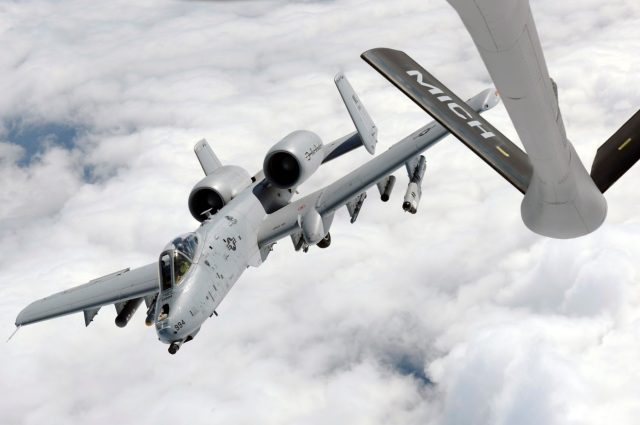
The US Air Force plans to retire over 200 “legacy systems” to focus on research and development and advanced weapon systems, according to the service’s Fiscal Year 2022 budget proposal.
The air force’s $173.7 billion request includes the US Air Force and US Space Force budgets. The air force’s budget of $156.3 billion is a 2.3% increase and the space force’s budget of $17.4 billion is a 13.1% increase from FY 2021.
Key modernization programs funded in the budget proposal include the Ground Based Strategic Deterrent, the replacement for the aging Minuteman III; Next-Generation Air Dominance, the Air Force’s future air superiority capability; Advanced Battle Management System, the Department’s contribution to Joint All Domain Command and Control; and space-based capabilities such as the Next-Gen Overhead Persistent Infrared missile warning system.
In order to focus resources to these and other modernization efforts, the budget includes proposals to right size aging, costly, and less-than-capable legacy systems by retiring 48 F-15C/D, 47 F-16 C/D, 42 A-10, 20 RQ-4 Block 30, 18 KC-135, 14 KC-10, 13 C-130H, and four E-8 aircraft.
The budget proposal seeks to procure advanced weapon systems like the hypersonic Air-Launched Rapid Response Weapon, and increasing the budget for the Joint Air-to-Surface Standoff missile to provide quantities of advanced weaponry needed to deter future conflicts.
The service also requested the purchase of F-35, KC-46 Pegasus, F-15EX Eagle II and MC-130J aircraft.
The space force’s procurement budget will grow by $456 million to procure National Security Space Launch Vehicles which provide assured access to space for the nation’s warfighting and intelligence satellites. It also procures GPS III Follow-on Space Vehicles that provide new capabilities, including a spot beam that offers an anti-jam improvement 100 times greater than current encrypted military code.
“This budget starts us on the path necessary to organize, train, and equip the air and space forces to deter and, if necessary, defeat the challenges we anticipate in 2030 and beyond,” said Acting Secretary of the Air Force John Roth. “It not only funds the capabilities required today, but also where the department of the air force needs to make trade-offs to invest in the capabilities required for future competition.”
The budget also takes action to address the challenges of sexual assault, suicide, and disparate treatment of Airmen and Guardians to build resiliency. Funding is increased by $7.7 million to develop prevention programs within the DAF focused on the prevention of readiness-detracting behaviors including sexual assault, interpersonal violence, and self-harm. Additionally, $6 million is added for diversity and inclusion initiatives to include new training and recruiting scholarships.
Pentagon’s FY 2022 budget request
In line with the US Air Force’s plans, the US defense department’s fiscal year 2022 budget request includes the largest-ever research, development, test and evaluation request — $112 billion, which is a 5.1% increase over fiscal 2021. It also includes $27.7 billion for nuclear triad modernization.
The budget totals $752.9 billion and reflects a 1.6% increase from the fiscal 2021 enacted budget.
The budget provides a 2.7% pay raise for both military and civilians, while investing nearly $9 billion in family support programs.
The budget request slightly lowers total military active and reserve component end strength from FY21 authorized 2,150,375 to 2,145,900. The only service to get an end strength increase is the Space Force, which had 6,434 guardians authorized in FY21, with a request to bump that up to 8,400.
Pentagon’s FY22 budget proposal now goes to Congress for its consideration. Under the typical schedule, the budget must be approved and signed into law by the president by Oct. 1, 2021, when the new fiscal year begins.


























